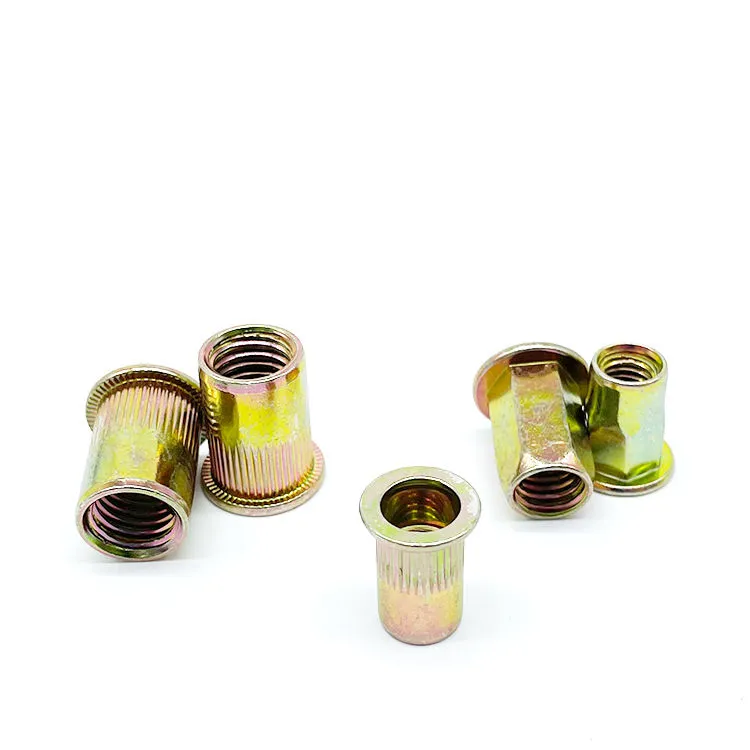

self tightening screws
Dec . 15, 2024 19:39 Back to list
self tightening screws
The Art of Self-Tightening Screws An Innovative Solution for Modern Applications
In the world of engineering and manufacturing, the quest for efficiency, reliability, and effectiveness drives the development of innovative solutions. Among these innovations, self-tightening screws have emerged as a noteworthy advancement. These screws not only serve the primary function of fastening components together but also possess a unique design that allows them to tighten themselves under certain conditions. This captivating feature has seen them gain traction across various industries, including automotive, aerospace, and electronics.
The Mechanism Behind Self-Tightening Screws
Self-tightening screws generally operate on the principle of a specialized thread design, which incorporates unique geometries or additional mechanisms that promote tightness over time. When subjected to vibrations or mechanical loads, these screws are able to adjust their grip, preventing loosening that typically occurs with traditional fasteners. This is especially important in scenarios where constant vibration is present, such as in vehicles, machinery, or electronic devices.
For example, some self-tightening screws employ a combination of pointed tips and helical threads that interact with the material in which they are screwed. As the screw engages with the workpiece, any shifting or vibrational stress causes the screw to rotate slightly deeper, effectively tightening its hold. This self-adjusting feature minimizes the need for maintenance and regular inspections, which can save valuable time and resources in a production or operational context.
Advantages of Self-Tightening Screws
One of the most significant advantages of self-tightening screws is their ability to enhance safety. In critical applications, such as aircraft assembly or automotive manufacturing, a loose screw can lead to catastrophic failure. By incorporating self-tightening mechanisms, manufacturers can reduce the risk of such failures, thereby increasing overall safety for users and operators alike.
Another benefit is the reduction in labor costs associated with installation and maintenance. Traditional screws often require periodic checks and re-tightening to ensure they remain secure. However, with self-tightening screws, the need for frequent maintenance is significantly lowered, allowing engineers and technicians to focus their efforts on other vital aspects of production or assembly.
self tightening screws

Moreover, self-tightening screws can contribute to sustainability efforts. By reducing the frequency of repairs and replacements, they can help minimize waste and the consumption of raw materials. This aligns with increasing global emphasis on sustainability and environmental responsibility within industry practices.
Applications Across Industries
The innovative design of self-tightening screws has found its way into numerous industries, revolutionizing traditional fastening methods. In the automotive sector, engineers utilize these screws in various components, such as engines and chassis, where vibrations are common. For electronics, self-tightening screws are particularly beneficial in securing delicate components on circuit boards, ensuring longevity and reliability even in portable devices prone to movement.
In the aerospace industry, the stakes are even higher. Aircraft components are subjected to severe conditions, and any failure due to fastener loosening can have dire consequences. Self-tightening screws provide peace of mind to engineers and manufacturers by enhancing the integrity of critical assemblies.
The Future of Self-Tightening Screws
As technology continues to advance, the potential for self-tightening screws seems limitless. Research is ongoing to create even more sophisticated designs that adapt to varying conditions, including temperature fluctuations and material deformation. Moreover, integration with smart technology could lead to screws that can monitor their own tightness and send alerts when maintenance is required.
In conclusion, self-tightening screws represent a significant leap forward in fastener technology, providing effective solutions to common problems associated with traditional screws. Their ability to maintain tightness under stress not only enhances safety but also promotes efficiency and sustainability across different sectors. As industries evolve and face new challenges, the demand for innovative solutions like self-tightening screws will inevitably grow, paving the way for even more advancements in fastening technology.
Latest news
-
Hot Dip Galvanized Bolts-About LongZe|High Strength, Corrosion Resistance
NewsJul.30,2025
-
High-Strength Hot Dip Galvanized Bolts - Hebei Longze | Corrosion Resistance, Customization
NewsJul.30,2025
-
Hot Dip Galvanized Bolts-Hebei Longze|Corrosion Resistance&High Strength
NewsJul.30,2025
-
High-Strength Hot-Dip Galvanized Bolts-Hebei Longze|Corrosion Resistance&High Strength
NewsJul.30,2025
-
Hot Dip Galvanized Bolts-Hebei Longze|Corrosion Resistance&High Strength
NewsJul.30,2025
-
Hot Dip Galvanized Bolts - Hebei Longze | Corrosion Resistance, High Strength
NewsJul.30,2025

